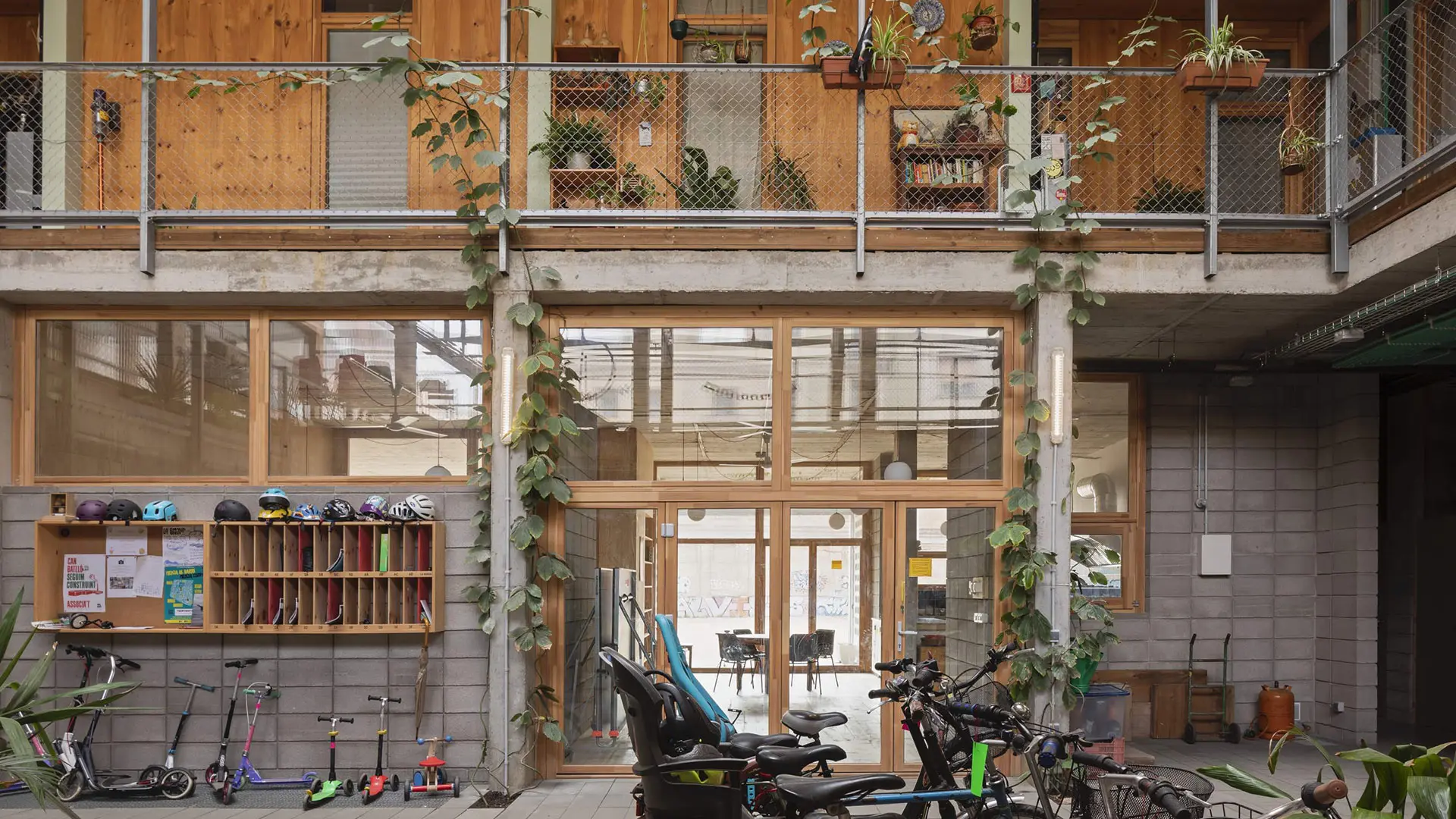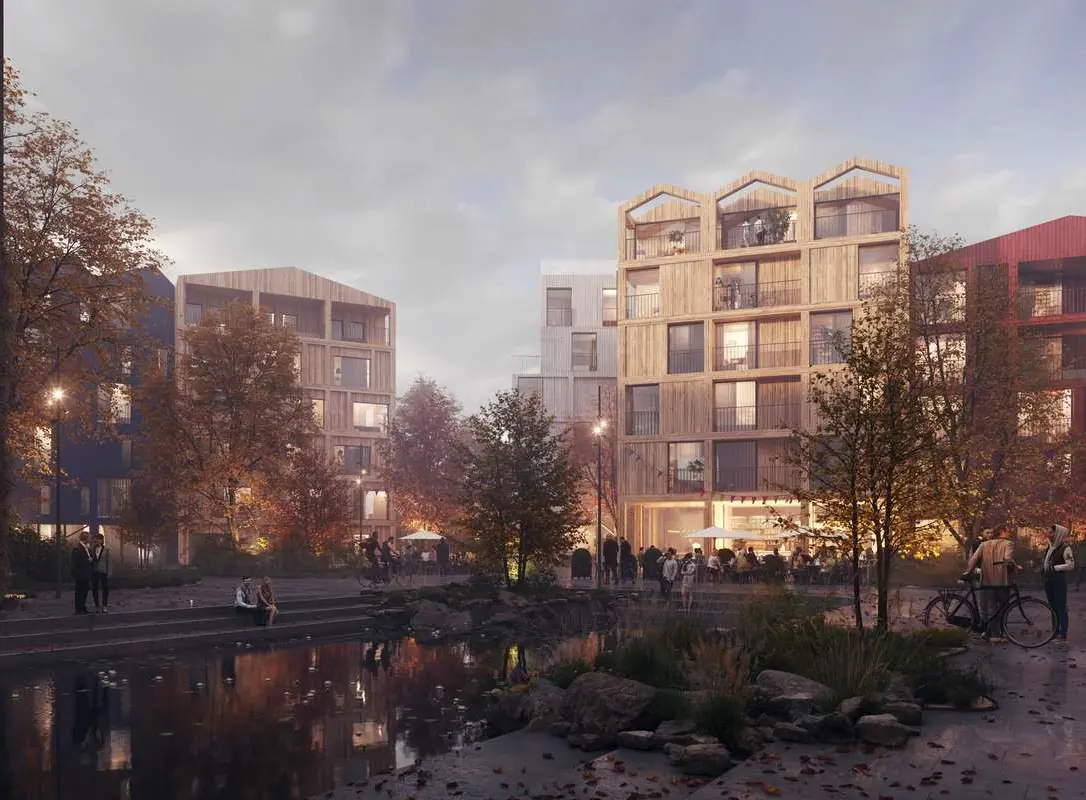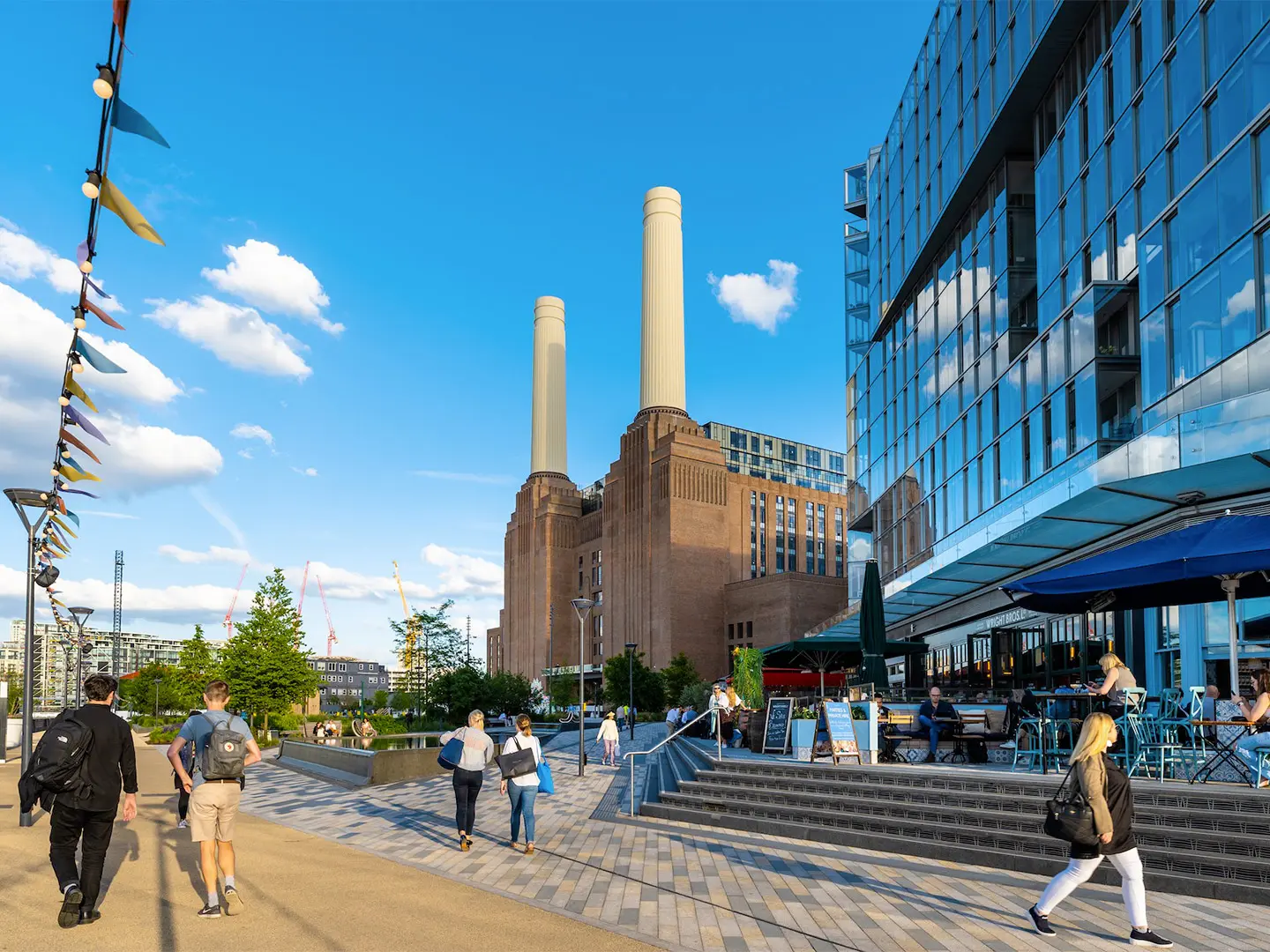In partnership with MiCodmc, a selection of establishments ripe for discovery during the 63rd edition of the Salone del Mobile.Milano, from 8th to 13th April
Urban regeneration: examples and best practices from Europe and the world

La Borda, Lacol, Barcelona
The transformation of cities increasingly involves projects that renew the existing, for example by redeveloping brownfield sites and underused buildings. A rather checkered phenomenon that takes different forms depending on the context, leading to experiments with new kinds of housing as well as excluding large segments of the population
Hoped for, discussed at all levels and often invoked as a possible panacea for all the ills afflicting the suburbs, urban regeneration is one of the hottest topics of the present. In fact, we live in increasingly dense cities – Milan is a good example, with its 106.7 square kilometers of urban area already built up out of a total of 181.8 – where it becomes vital to recycle whatever has already been built by converting and redeveloping degraded or disused sites: abandoned factories, disused railroad yards, office complexes that are no longer functional, and much else. The phenomenon is certainly not new. In fact it can be said to be as old as the city, since makeovers of the existing have been a common practice since ancient times. There is no shortage of historical examples, from Victorian London to Baron Haussmann's Paris.
Urban regeneration today goes hand in hand with sustainability in most cases. The recovery of disused structures and already built spaces involves the use of eco-friendly materials and renewable energy resources. There is, however, a downside: the real risk that these processes, generally applied to outer-city areas that are not very attractive as real estate, will rapidly increase the value of houses and land, pushing the most vulnerable sections of the original population even further out. This is stressed by the sociologist Giovanni Semi in his latest book Breve manuale per una gentrificazione carina (Mimesis). Semi adopts an antiphrastic approach to the issue. The other side of regeneration is “that belt of neglected development, where the expulsions generated by regeneration/gentrification end. If rents rise or available housing shrinks, where do those who lived in the regenerated areas go?” In short, what are the requirements of a regeneration project in order to be good and not simply charming? “Actually, we should ask ourselves above all who it is good for,” Semi explains. “If an area were redeveloped so as to make it cheaper, rich in services, open to use and accessible by everyone, then I would consider it positive.” So let's see what is happening outside Italy and the strategies being adopted in some large European and extra-European cities.
Copenhagen, first in the class
The Danish capital is one of the most advanced cities when it comes to environmental sustainability. It has long topped the rankings of the “greenest” and “smartest” cities, and is on its way to becoming the world’s first zero-emission city. Its most significant projects in recent years included redevelopment of the old port of Nordhavn, one of Copenhagen's historic sites, with large factory buildings occupied by past industries, later disused, and the berths for ships. This area has been radically redeveloped to a masterplan by COBE architects and today houses a new, vital quarter of the city that retains its links with the sea and the most recognizable elements of the former docklands. A more recent example is Fælledby, begun in 2019, which will redevelop a site previously used as a landfill not far from the center of Copenhagen by building a new neighborhood based on harmonious coexistence between the inhabitants and nature. The all-timber development designed by Henning Larsen seeks to preserve the microclimate and local fauna with the inclusion of numerous green spaces, and even shelters for birds and bats integrated into the facades of the buildings.
Barcelona, the pioneer
The so-called “Barcelona model” has been setting the standard since the 1990s, especially with regard to urban planning policies in seaports. As another example of the redevelopment of docklands, its waterfront is still one of the most widely studied and copied cases. Here, the most celebrated urban regeneration project (recipient of the Mies van der Rohe Award Emerging Architecture Prize in 2022) is the La Borda cooperative housing project, built just before the outbreak of the pandemic. The recovery of a disused area in the city center was closely overseen by the 28 members of a cooperative, who then became the inhabitants of the complex, who share a series of amenities and spaces. This is a passive building with active inhabitants, characterized by an exemplary design inspired by Scandinavian models, with great care lavished on the needs of those who work from home, a factor greatly appreciated during the lockdown.

Henning Larsen, Faelledby, Copenhagen
Copenhagen, la prima della classe
La capitale danese è una delle città più all’avanguardia dal punto di vista della sostenibilità ambientale, da tempo ai primi posti delle classifiche dei centri urbani più “green” e “smart” e in procinto di diventare la prima città al mondo a zero emissioni. Tra i progetti più significativi degli ultimi anni c’è la riqualificazione del vecchio porto di Nordhavn, una delle aree storiche di Copenhagen, con caseggiati utilizzati dalle industrie di un tempo e oggi dismessi e approdi per le navi. Quest’area è stata trasformata radicalmente seguendo un masterplan dello studio COBE architects e oggi ospita un nuovo, vitale distretto cittadino che conserva il suo legame con il mare e gli elementi più riconoscibili dell’ex area portuale. Un altro esempio più recente è quello di Fælledby, partito nel 2019, che punta a riqualificare un’area precedentemente adibita a discarica non lontana dal centro di Copenhagen attraverso l’edificazione di un nuovo quartiere basato sulla convivenza armonica di abitanti e natura. Il quartiere tutto di legno progettato da Henning Larsen si propone di preservare il microclima e la fauna locale, per questo comprende numerosi spazi verdi e perfino rifugi per uccelli e pipistrelli, integrati nelle facciate degli edifici.
Barcellona, la pioniera
Il cosiddetto “modello Barcellona” fa scuola dagli anni Novanta, soprattutto per quanto riguarda le politiche urbanistiche delle città di mare. Sempre a proposito di riqualificazione delle aree portuali, il suo waterfront è ancora oggi tra i casi più studiati e copiati. Qui, il progetto di rigenerazione urbana più celebrato (e ricompensato con il Premio Emergente del Mies van der Rohe Award nel 2022) è l’housing cooperativo di La Borda, nato poco prima dello scoppio della pandemia. Il recupero di un’area dismessa nel centro della città è stato interamente seguito dai 28 soci di una cooperativa che poi sono diventati gli abitanti del complesso e condividono una serie di attrezzature e di spazi. Un edificio passivo con abitanti attivi, caratterizzato da un design esemplare che si nutre di ispirazioni scandinave e dall’attenzione portata alle esigenze di chi lavora da casa, un aspetto che è stato molto apprezzato durante il lockdown.

Battersea Power Station, London
London, between regeneration and gentrifying pressures
In the British metropolis, urban regeneration has lights and shadows. On the one hand, the recovery of disused industrial areas has been and continues to be an important driver of development, capable, for example, of completely changing the face of the East End and the Lower Lea Valley. On the other hand, the urban regeneration plan launched in conjunction with the 2012 Olympics has seen the almost total elimination of investments in social housing, formerly very important. As reported by numerous sources, also cited by Dezeen magazine in a recent article, since then more than a hundred council houses have been demolished and replaced with luxury residential complexes. The redevelopment and reopening of Battersea Power Station, completed in autumn 2022, also prompted mixed reactions. In the authoritative Guardian, for example, the journalist Oliver Wainwright wondered whether the former thermoelectric power station, recently converted into a multi-purpose center with apartments, leisure attractions, an art-hotel and an Apple campus covering over 46,000 square meters, had become “a playground for the super rich”.
Singapore, the data revolution
The Asian city-state, sensitive by its nature and dimensions to the problem of the shortage of building space, was the first to seize the possibilities offered by new technologies, and in particular the Metaverse. The local government has designed an innovative tool for planning urban and environmental projects: Virtual Singapore. This digital twin of the city combines information from sensors located around the city with data from different sources (maps, photographs, information provided by citizens...), useful for testing new solutions by measuring their effects. The relative smallness of the Asian metropolis, located on an island surrounded by an archipelago of islets and unable to expand, means that many projects are based on regeneration. One of these, Gardens by the Bay, a large complex of three parks built on a reclaimed site, has become a popular tourist attraction. It has huge artificial trees designed to provide shade during the day and be decked out with colored lights and sounds in the evening, plus a panoramic walkway raised 22 meters above the ground.


 Stories
Stories










